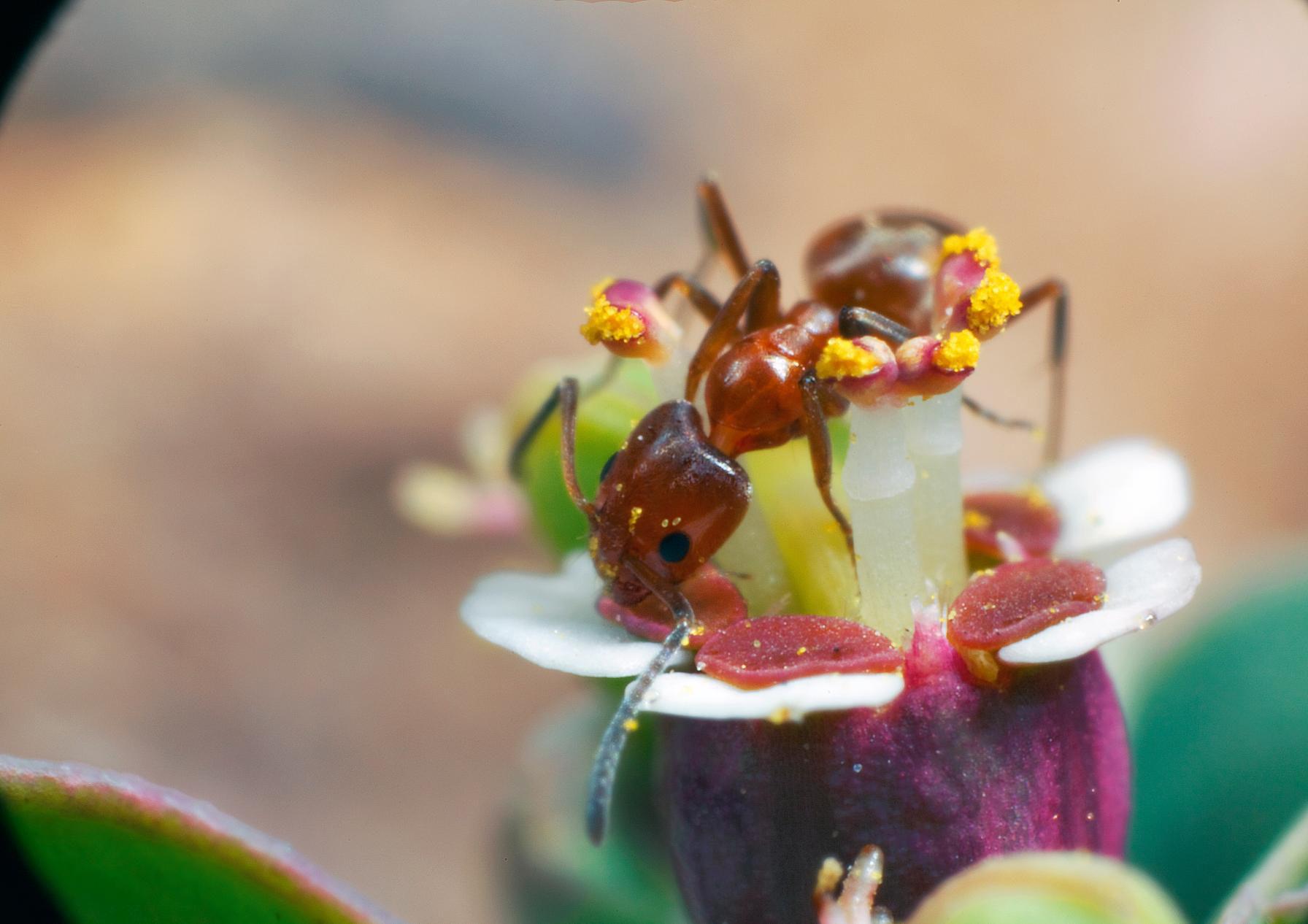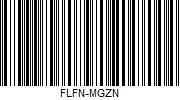nature & wildlife
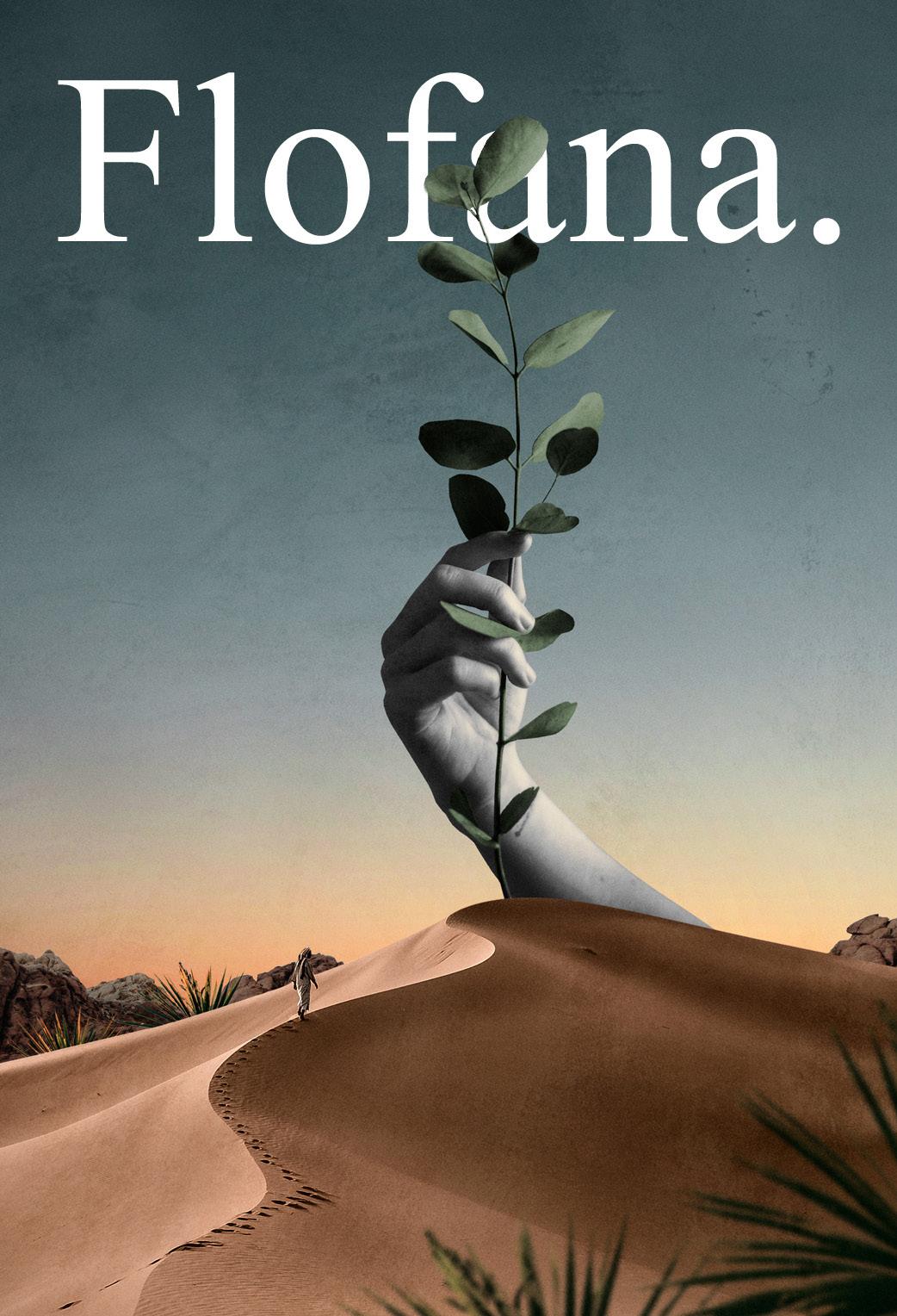


Taming the wild, domesticating wildlife

Enter the Anthropocene, impact of humanity

Ancient Swimmers, rediscovery of coelacanth Gold Dusters, meet the Earth’s pollinators
A study showed that 100 percent of tested sea turtles had ingested plastic which can cause death by suffocation, infection, and entanglement. They are at risk of extinction.
Photo by Kendy ShirasuWe publish stories from the heart, knowledge from the field, and ideas from horizon of a brave new world.
with love, Flofana x

Viona
Only a handful of wild animal species have been succesfully bred to get along with humans. The reason, scientists say, is found in their genes.

Foxes bred through generations to be as human-friendly as dogs get a boost from Lyudmila Trut and other staff at the Institute of Cytology and Genetics, in Novosibirsk, Siberia.
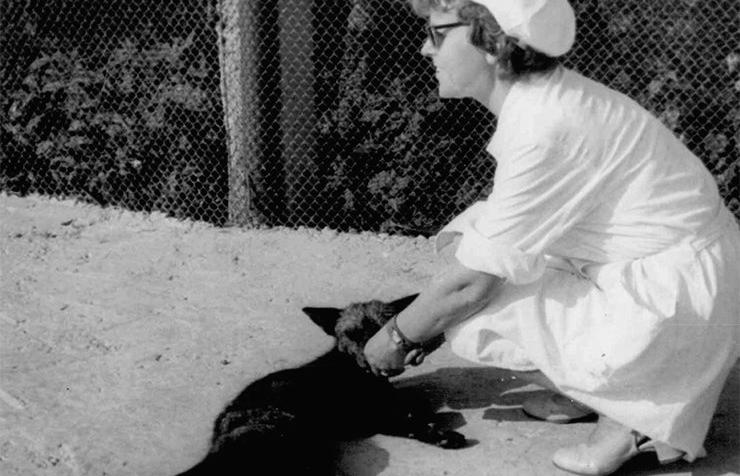
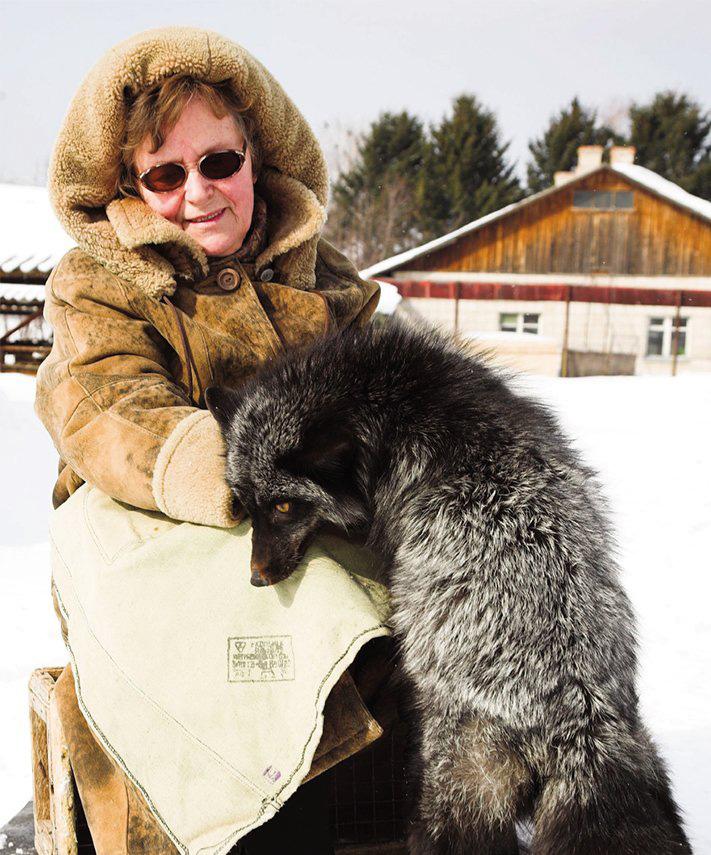
“Hello! How are you doing?” Lyudmila Trut says, reaching down to unlatch the door of a wire cage labeled “Mavrik.” We’re standing between two long rows of similar crates on a farm just outside the city of Novosibirsk, in southern Siberia, and the 76-year-old biologist’s greeting is addressed not to me but to the cage’s furry occupant. Although I don’t speak Russian, I recognize in her voice the tone of maternal adoration that dog owners adopt when addressing their pets.
Mavrik, the object of Trut’s attention, is about the size of a Shetland sheepdog, with chestnut orange fur and a white bib down his front. He plays his designated role in turn: wagging his tail, rolling on his back, panting eagerly in anticipation of attention. In adjacent cages lining either side of the narrow, open-sided shed, dozens of canids do the same, yelping and clamoring in an explosion of fur and unbridled excitement.
Except that Mavrik, as it happens, is not a dog at all. He’s a fox. Hidden away on this overgrown property, he and several hundred of his relatives are the only pop ulation of domesticated silver foxes in the world. And by “domesticated” I don’t mean captured and tamed, or raised by humans and conditioned by food to tol erate the occasional petting. I mean bred for domestication, as tame as your Labra dor. These foxes treat any human as a po tential companion, a behavior that is the product of arguably the most extraordi nary breeding experiment ever conducted.
they remind me a lot of golden retrievers, who are basically not aware that there are good people, bad people, people that they have met before, and those they haven’t.
- Anna Kukekova Cornell researcherIt started more than a half century ago, when Trut was still a graduate student. Led by a biologist named Dmitry Belyaev, re searchers at the nearby Institute of Cytology and Genetics gathered up 130 foxes from fur farms. They then began breeding them with the goal of re-creating the evolu tion of wolves into dogs, a transformation that began more than 15,000 years ago.
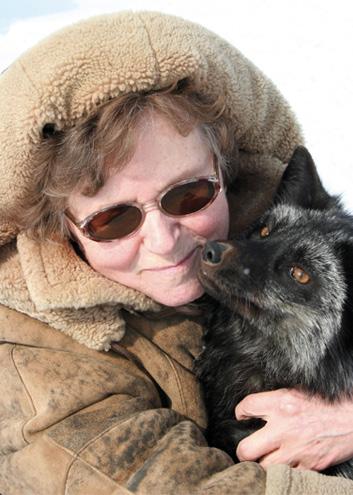
With each generation of fox kits, Belyaev and his colleagues tested their re actions to human contact, selecting those most approachable to breed for the next generation. By the mid-1960s the ex periment was working beyond what he could’ve imagined. They were producing foxes like Mavrik, not just unafraid of humans but actively seeking to bond with them. His team even repeated the experi ment in two other species, mink and rats. “One huge thing that Belyaev showed was the timescale,” says Gordon Lark, a University of Utah biologist who studies dog genetics. “If you told me the animal would now come sniff you at the front of the cage, I would say it’s what I expect. But that they would become that friend ly toward humans that quickly… wow.”
Miraculously, Belyaev had compressed thousands of years of domestication into a few years. But he wasn’t just looking to prove he could create friendly foxes. He had a hunch that he could use them to un lock domestication’s molecular mysteries. Domesticated animals are known to share a common set of characteristics, a fact docu mented by Darwin in The Variation of Ani mals and Plants Under Domestication. They tend to be smaller, with floppier ears and curlier tails than their untamed progenitors. Such traits tend to make animals appear ap pealingly juvenile to humans. Their coats are sometimes spotted—piebald, in scien tific terminology—while their wild ances tors’ coats are solid. These and other traits, sometimes referred to as the domestication phenotype, exist in varying degrees across a remarkably wide range of species, from dogs, pigs, and cows to some nonmamma lians like chickens, and even a few fish.
Belyaev suspected that as the foxes became domesticated, they too might begin to show aspects of a domestica tion phenotype. He was right again: Selecting which foxes to breed based sole ly on how well they got along with humans seemed to alter their physical appearance along with their dispositions.
Driving those changes, Belyaev postulated, was a collection of genes that conferred a propensity to tameness—a genotype that the foxes perhaps shared with any species that could be domesticated. Here on the fox farm, Kukekova and Trut are searching for precisely those genes today. Elsewhere, re searchers are delving into the DNA of pigs, chickens, horses, and other domesticated species, looking to pinpoint the genetic dif ferences that came to distinguish them from their ancestors. The research, accelerated by the recent advances in rapid genome sequencing, aims to answer a fundamental biological question: “How is it possible to make this huge transformation from wild animals into domestic animals?” says Leif Andersson, a professor of genome biolo gy at Uppsala University, in Sweden. The answer has implications for understanding not just how we domesticated animals, but how we tamed the wild in ourselves as well.

The exercise of dominion over plants and animals is arguably the most conse quential event in human history. Along with cultivated agriculture, the ability to raise and manage domesticated fau na—of which wolves were likely the first, but chickens, cattle, and other food species the most important—altered the hu man diet, paving the way for settlements and eventually nation-states to flourish.
Yet the process by which it all happened has remained stubbornly impenetrable. An imal bones and stone carvings can some times shed light on the when and whereeach species came to live side by side with humans. More difficult to untangle is the how. Did a few curious boar creep closer to human populations, feeding off their gar bage and with each successive generation becoming a little more a part of our diet?
Did humans capture red jungle fowl, the ancestor of the modern chicken, straight from the wild—or did the fowl make the first approach? Out of 148 large mammal species on Earth, why have no more than 15 ever been domesticated? Why have we been able to tame and breed horses for thou sands of years, but never their close rela tive the zebra, despite numerous attempts?
In fact, scientists have even strug gled to define domestication precisely. We all know that individual animals can be trained to exist in close contact with humans. A tiger cub fed by hand, imprinting on its captors, may grow up to treat them like family. But that tiger’s offspring, at birth, will be just as wild as its ancestors.
Domestication, by contrast, is not a quali ty trained into an individual, but one bred into an entire population through gener ations of living in proximity to humans.
This brown rat’s angry display at the photographer reflects 73 generations of breeding for hostility to humans. Scientists at Novosibirsk and in Germany are comparing the aggressive rat genome to the of rats selected for friendliness, attempting to untangle connections between DNA and behavior.
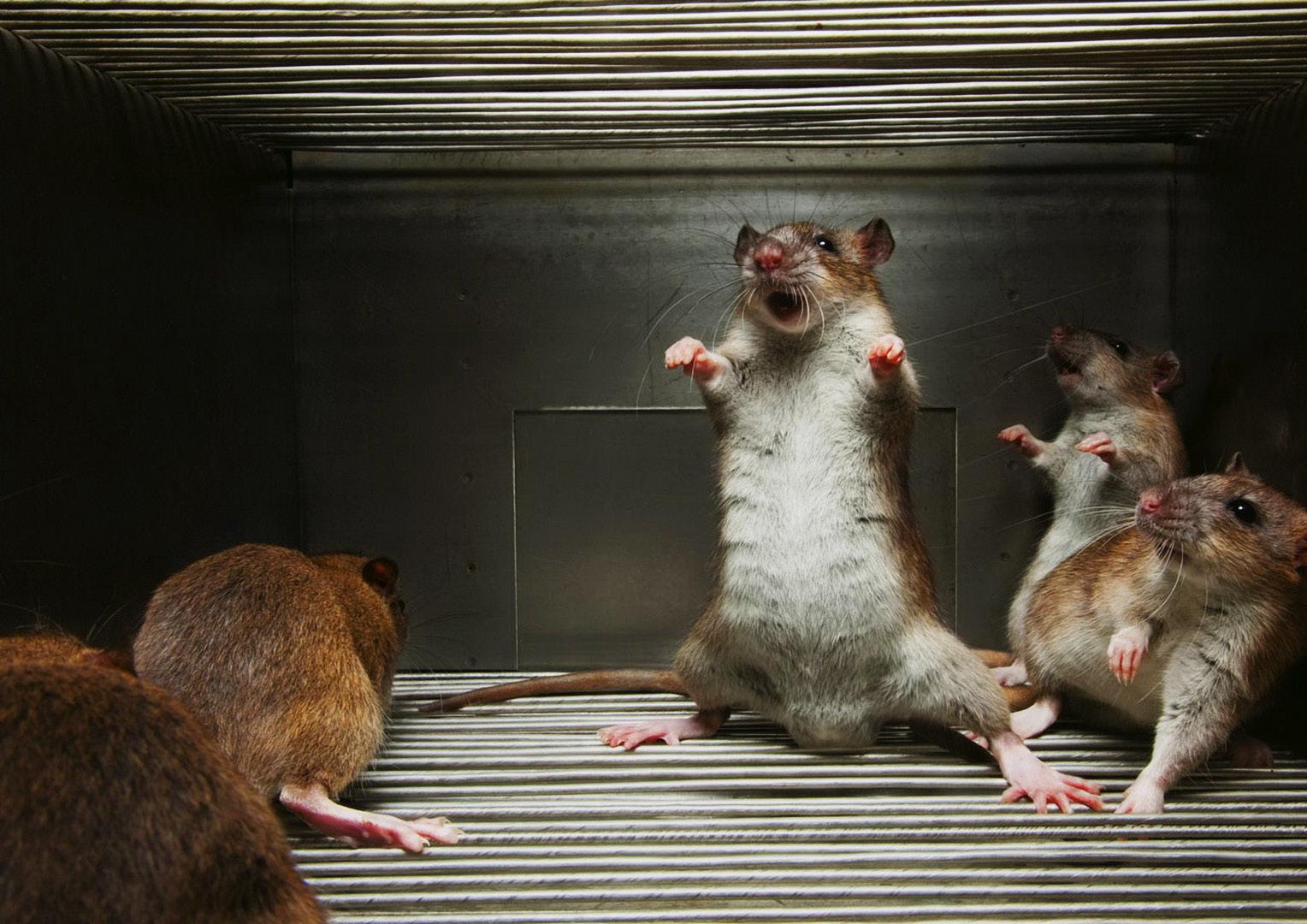
Piebald coats like this one on this Holstein cow are a signature trait of domesticated animals. An easy target for predators in the wild, piebald fur may have been selected for by humans to differentiate among livestock.
 Photo / JacLou DL
Photo / JacLou DL
Oil transformed Dubai in the 1970s. The city now boasts the world’s tallest building, giant malls, and some two million residents, who depend on desalinated seawater and airconditioning—and thus on cheap energy—to live in the Arabian desert.

It’s a new name for a new geologic epoch—one defined by our own massive impact on the planet. That mark will endure in the geologic record long after our cities have crumbled.
The path that leads up a hill, across a fast-moving stream, back across the stream, and then past the carcass of a sheep. In my view it’s raining, but here in the Southern Uplands of Scotland, I’m told, this counts as only a light drizzle, or smirr. Just beyond the final switchback, there’s a waterfall, half shrouded in mist, and an outcropping of jagged rock. The rock has bands that run vertically, like a layer cake that’s been tipped on its side. My guide, Jan Zalasiewicz, a British stratigrapher, points to a wide stripe of gray. “Bad things happened in here,” he says.
Discovered in 1911, this field pumped on as cities were rebuilt for cars and as ancient petroleum molecules were spun into household products such as plastics, cosmetics, and pharmaceuticals.

The stripe was laid down some 445 million years ago, as sediments slowly piled up on the bottom of an ancient ocean. In those days life was still confined mostly to the water, and it was undergoing a crisis. Between one edge of the three-foot-thick gray band and the other, some 80 percent of marine species died out, many of them the sorts of creatures, like graptolites, that no longer exist. The extinction event, known as the end-Ordovician, was one of the five biggest of the past half billion years. It coincided with extreme changes in climate, in global sea levels, and in ocean chemistry—all caused, perhaps, by a supercontinent drifting over the South Pole.
As oil companies drill deeper for offshore oil, mining companies work 24/7 to level Appalachian peaks for coal, which supplies half of U.S. electricity. This sum mit vanished in a day. Some 470 have been erased since the 1980s; the waste often buries streams. Mountaintop removal recovers just 6 percent of a coal deposit.
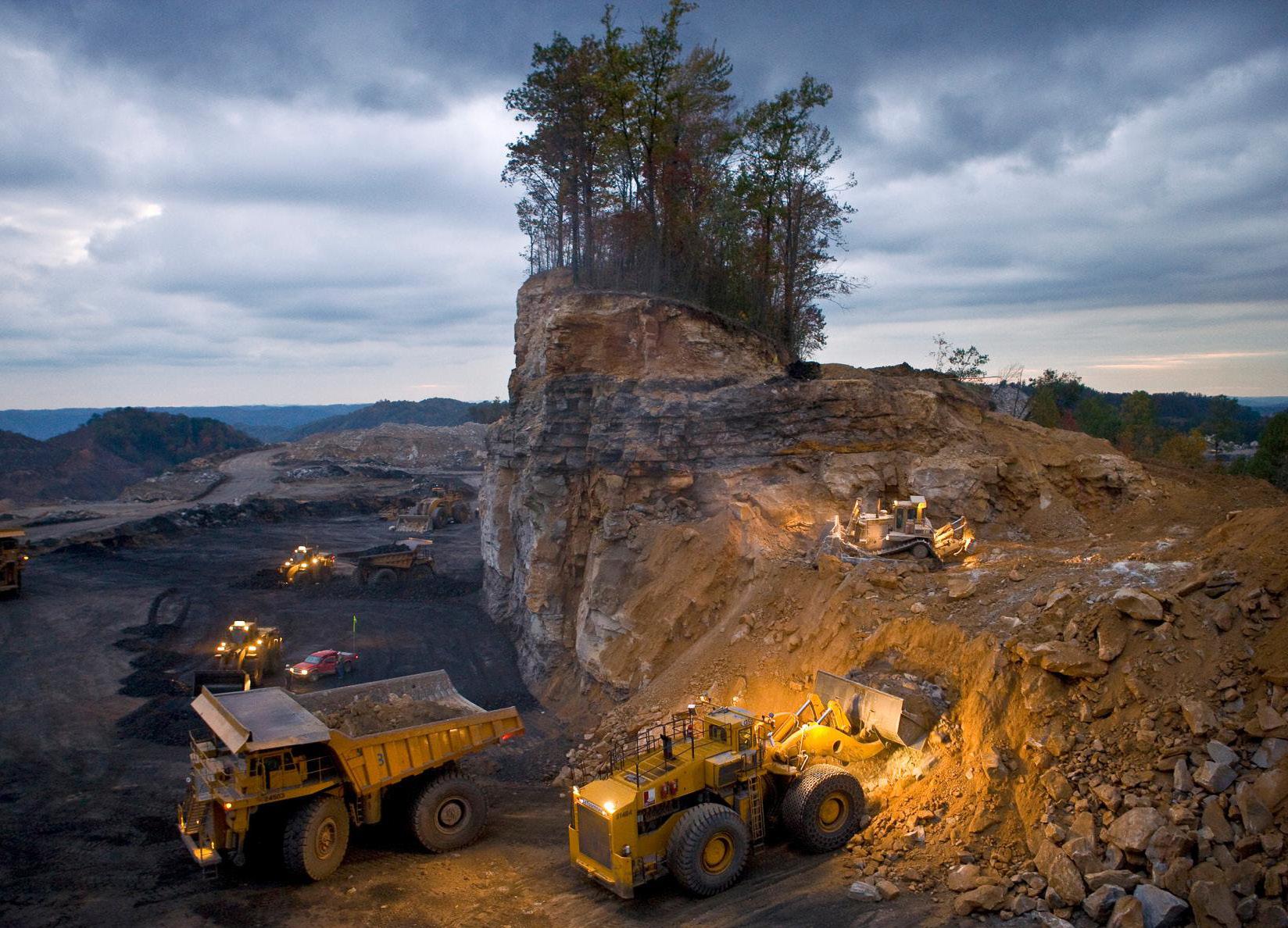
The word “Anthropocene” was coined by Dutch chemist Paul Crutzen about a decade ago. One day Crutzen, who shared a Nobel Prize for discovering the effects of ozone-depleting compounds, was sitting at a scientific conference. The conference chairman kept referring to the Holocene, the epoch that began at the end of the last ice age, 11,500 years ago, and that—officially, at least—continues to this day.
“Let’s stop it,” Crutzen recalls blurting out. “’We are no longer in the Holocene. We are in the Anthropocene.’ Well, it was quiet in the room for a while.” When the group took a coffee break, the Anthropocene was the main topic of conversation. Someone suggested that Crutzen copyright the word.
Way back in the 1870s, an Italian geologist named Antonio Stoppani proposed that people had introduced a new era, which he labeled the anthropozoic. Stoppani’s proposal was ignored; other scientists found it unscientific. The Anthropocene, by contrast, struck a chord. Human impacts on the world have become a lot more obvious since Stoppani’s day, in part because the size of the population has roughly quadrupled, to nearly seven billion. “The pattern of human population growth in the twentieth century was more bacterial than primate,” biologist E. O. Wilson has written. Wilson calculates that human biomass is already a hundred times larger than that of any other large animal species that has ever walked the Earth.
In 2002, when Crutzen wrote up the Anthropocene idea in the journal Nature, the concept was immediately picked up by researchers working in a wide range of disciplines. Soon it began to appear regularly in the scientific press. “Global Analysis of River Systems: From Earth System Controls to Anthropocene Syndromes” ran the title of one 2003 paper. “Soils and Sediments in the Anthropocene” was the headline of another, published in 2004.
The rock record of the present doesn’t exist yet, of course. So the question was: When it does, will human impacts show up as “stratigraphically significant”? The answer, Zalasiewicz’s group decided, is yes—though not necessarily for the reasons you’d expect.
A Tuscan beach captures the textured drama of humans and the sea. The “tropical” sands aren’t natural; they’re whitened by carbonates from the chemical plant, which also discharged mercury until recently. The plant converts salt extracted from the sea into chlorine and other essential products. Fossil fuels power such transforma tions; worldwide, the CO2 from smokestacks and tailpipes is slowly acidifying the ocean, threatening marine life.

On the arid plains of southern Spain, produce is grown under the world’s largest array of greenhouses and trucked north. Greenhouses use water and nutrients efficiently and produce all year—tomatoes in winter, for instance. But globally the challenge is grain and meat, not tomatoes. It takes 38 percent of Earth’s ice-free surface to feed seven billion people today, and two billion more are expected by 2050.
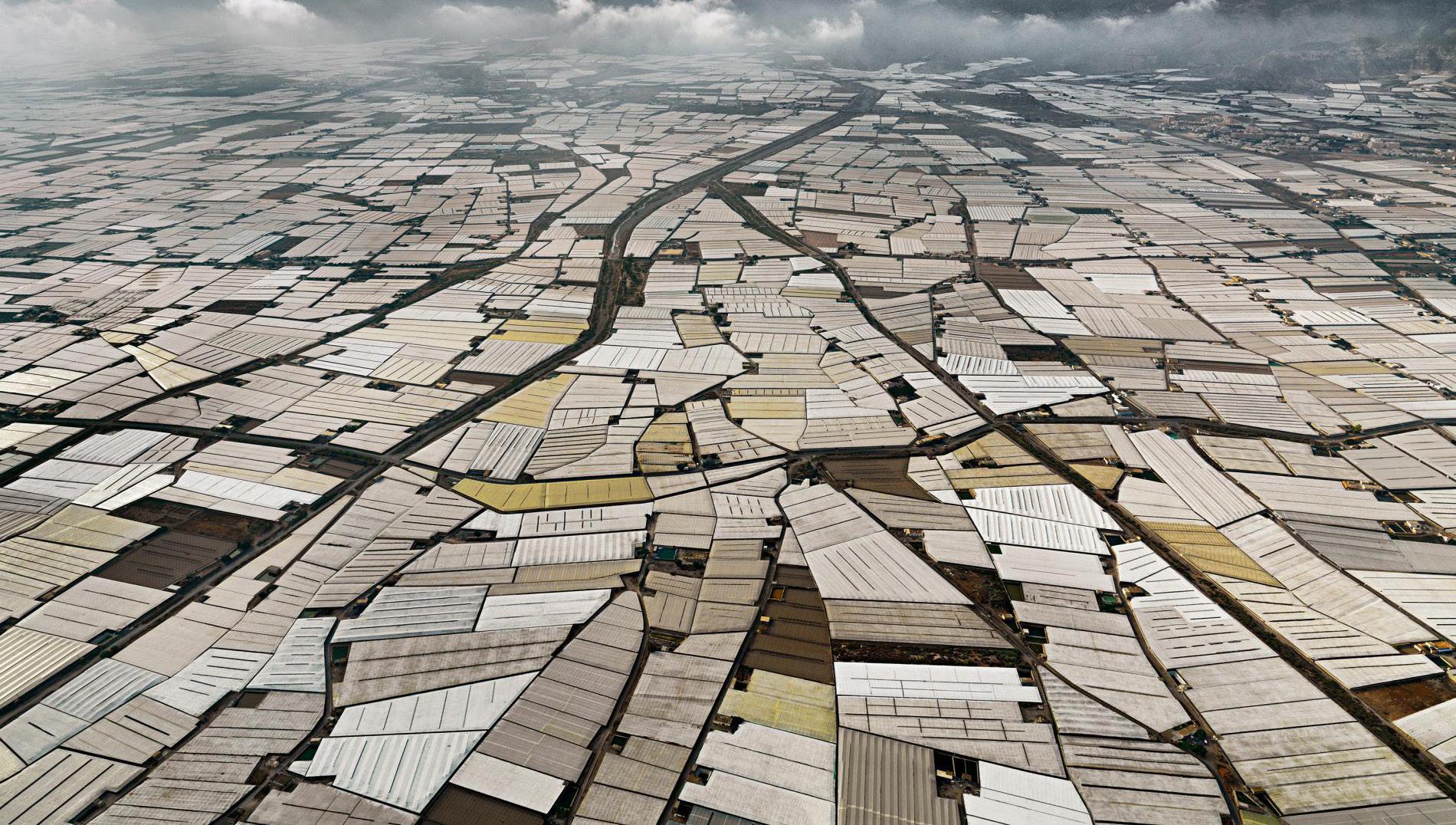
Dams tame floods, water crops (and people), and generate 16 percent of the world’s electricity, carbon free. They have also displaced 40 to 80 million people and destroyed river ecosystems. More than half the world’s large rivers are now dammed. Some, like the Colorado, are tapped out. Per sistent drought has left a “bathtub ring” in Lake Mead, which supplies water to much of the South west.
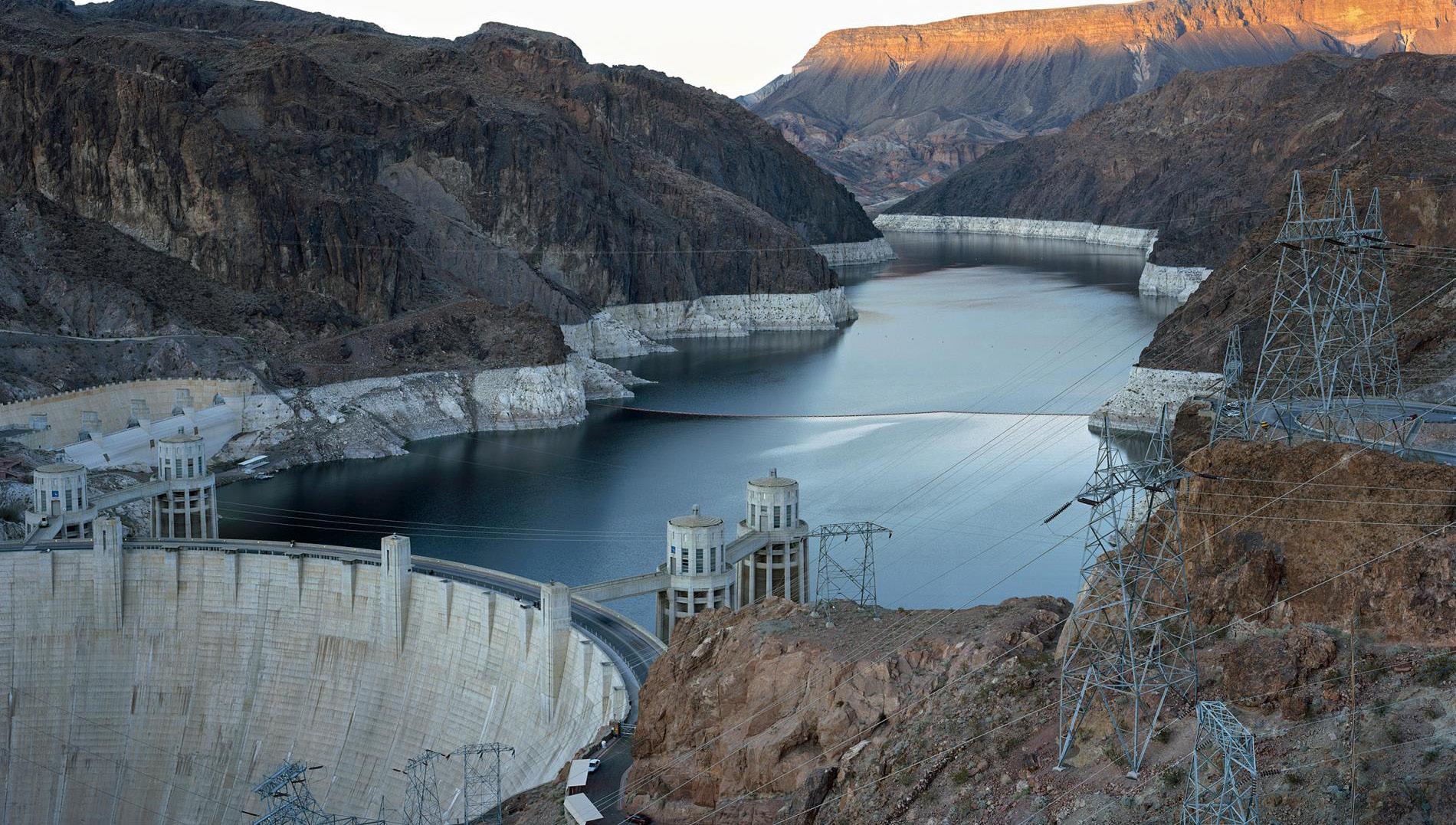
Ship breaking delivers jobs to Bangladesh and a wealth of scrap metal—but also asbestos, PCBs, and other toxics. Though waste recycling generally is booming, so is waste production. In American cities in recent decades, the two trends have just about offset each other.
 Photo / Edward Brutynsky
Photo / Edward Brutynsky
The coelacanth was thought to have gone extinct with the dinosaurs. Rediscovered in 1938, it is chronicled here in a rare photographic account.
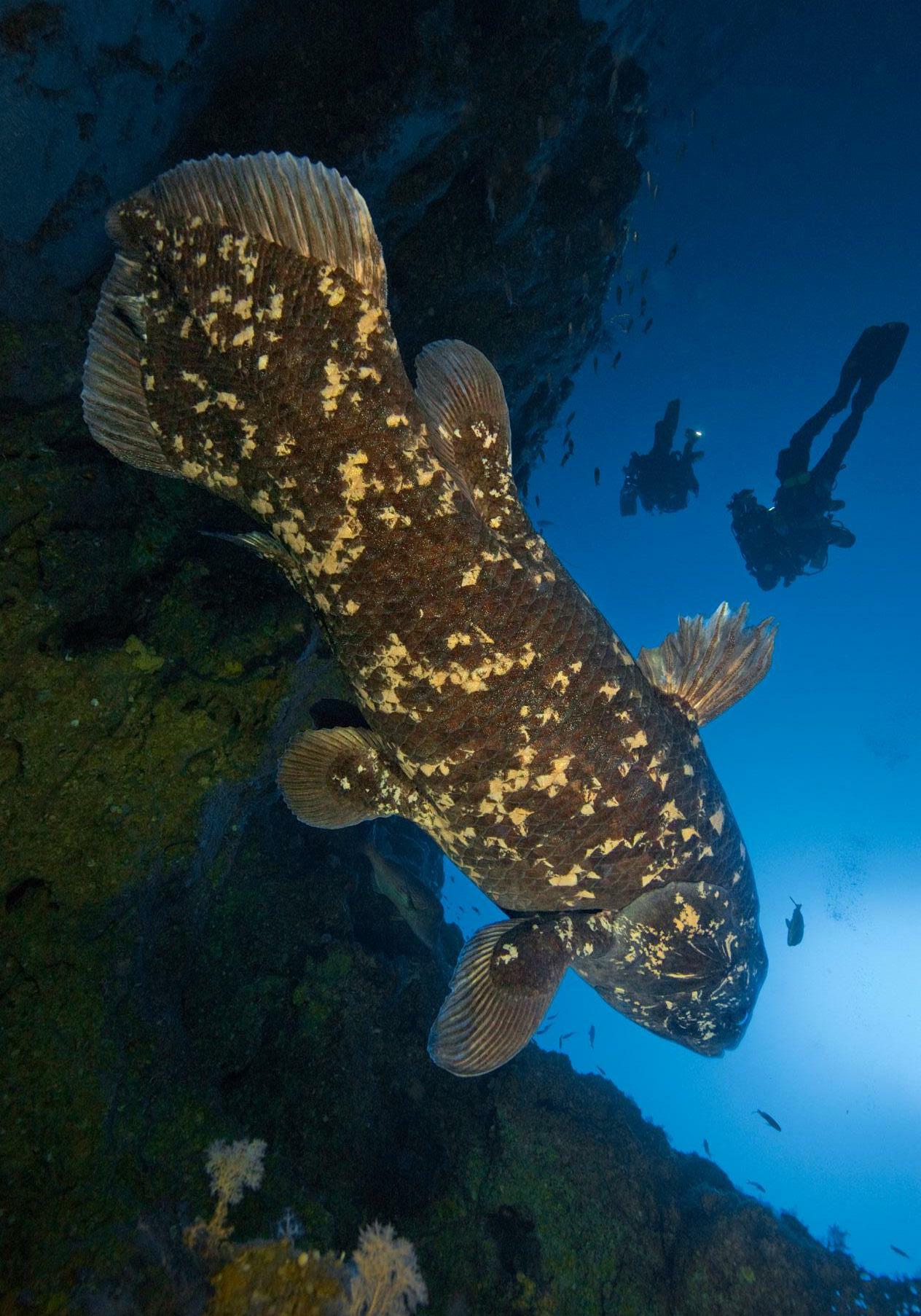
Named by a 19th-century naturalist, “coelacanth” comes from the Greek for “hollow spine”—a reference to the hollow spines that are part of its fin structure.
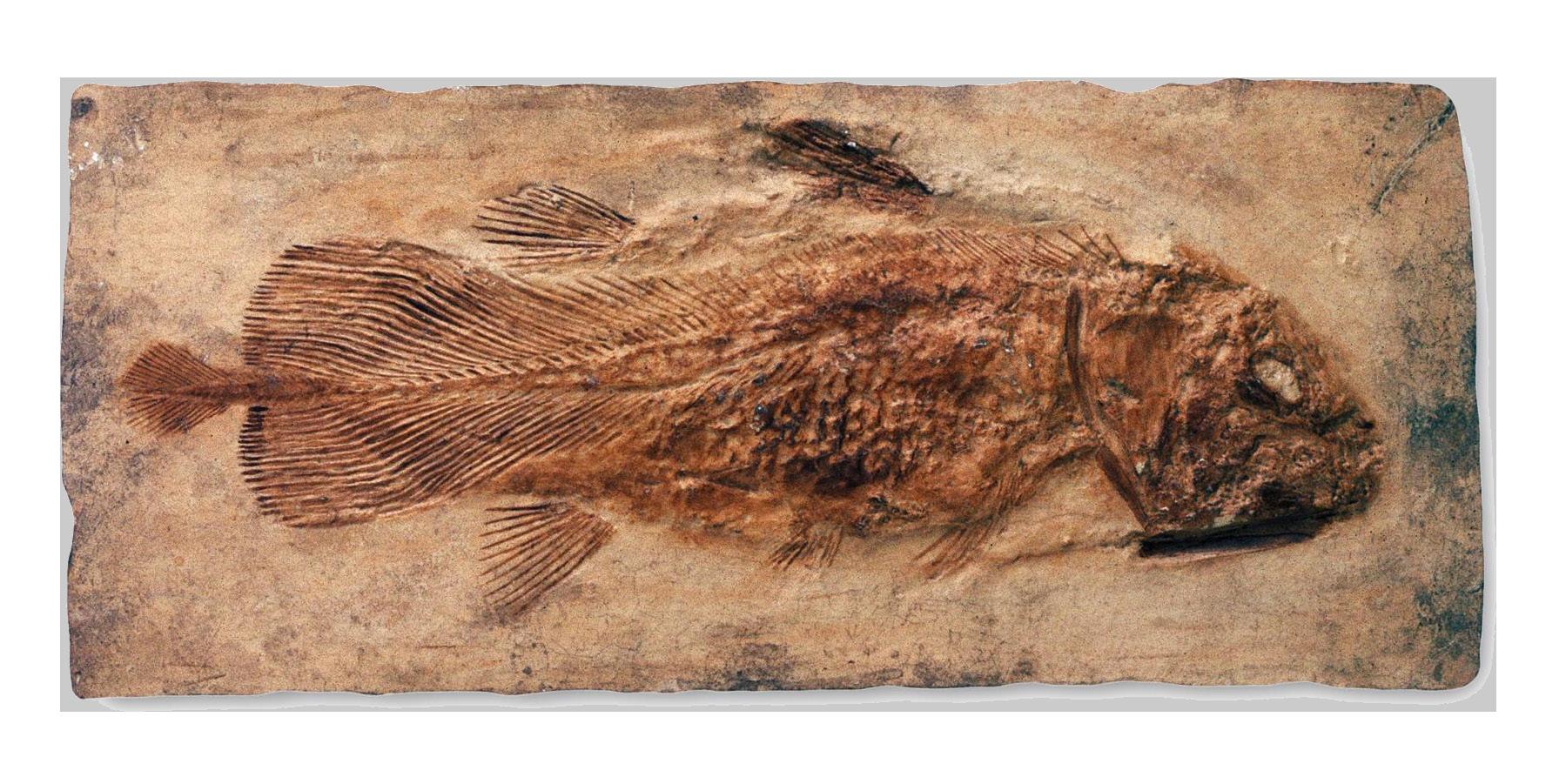
It’s not every day day that a living fossil shows up in a fisherman’s net. But that’s what happened in 1938, when a South African museum curator named Marjorie CourtenayLatimer spied a bizarre creature with thick scales, unusual fins, and an extra lobe on its tail, amid an otherwise ordinary haul of fish. Though she didn’t know it straightaway, CourtenayLatimer had rediscovered the coelacanth, which was assumed to have died out at the end of the Cretaceous period but somehow outlasted many of its prehistoric peers, dwelling deep in the ocean, undisturbed—and undetected—for eons.
Since this chance sighting, Latimeria chalumnae have been found in several pockets in the Indian Ocean. No one knows how many there are—maybe as few as 1,000 or as many as 10,000. Because of the depth of their habitat, they have mainly been photographed by submersibles and remotely operated vehicles. Divers first documented the fish in 2000; in January and February 2010, a specially trained team dived deep to take pictures of a small colony in Sodwana Bay, South Africa.
The coelacanth’s slow, graceful stroke is like no other fish’s. It moves left pectoral and right pelvic fins, then right pectoral and left pelvic fins—akin to the cross-step of tetrapods. When the expedition team visited in early 2010, the coelacanths ignored the humans, says photographer Ballesta, except the one above: “This is the moment he tried to smile to me.”
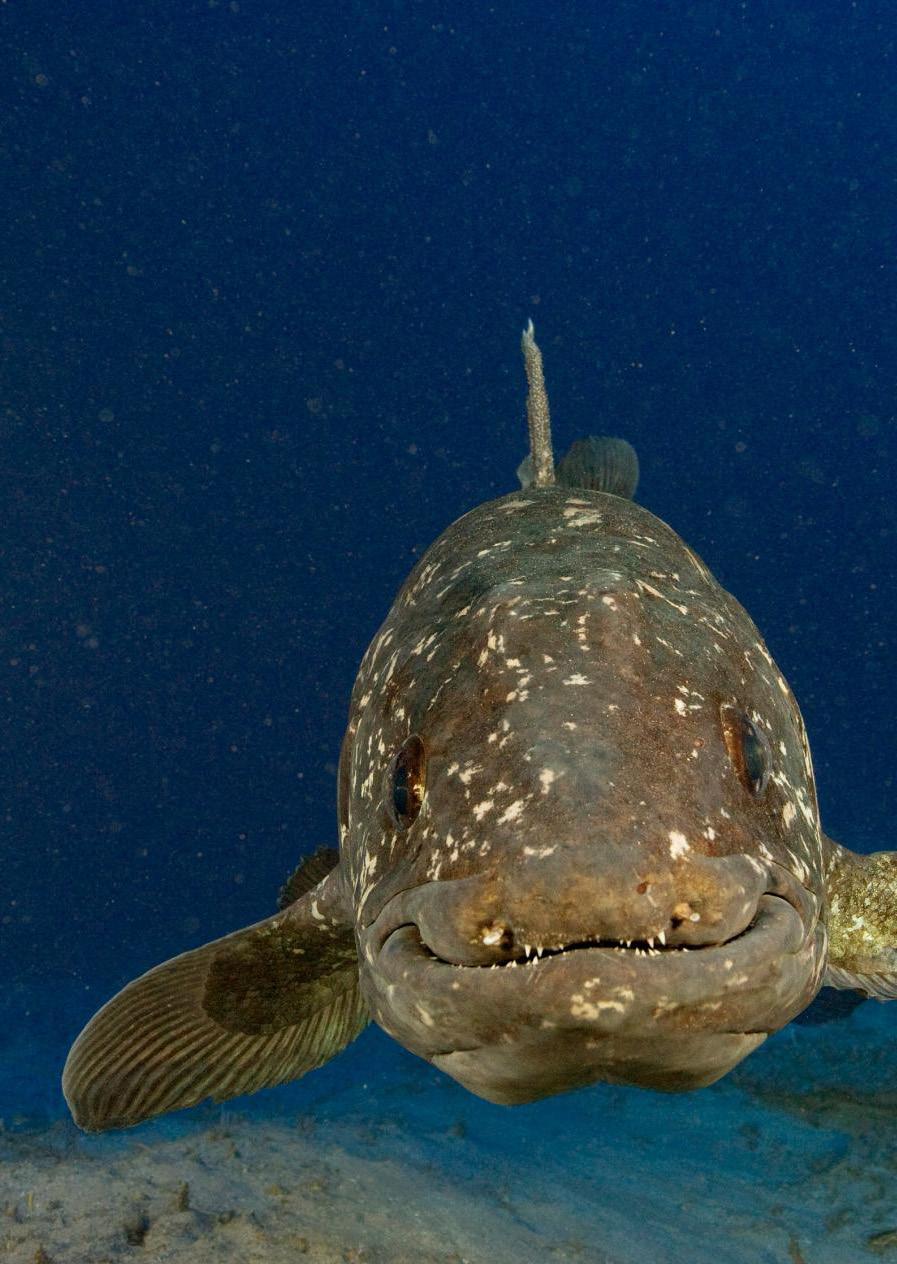
The expedition team made 21 dives to depths of 300 to 400 feet in South Africa’s Sodwana Bay area. Over the course of four weeks, they spotted coelacanths only six times. The nocturnal animals hide in underwater caves by day, then venture out at night, feeding on small fish, squid, and octopus.
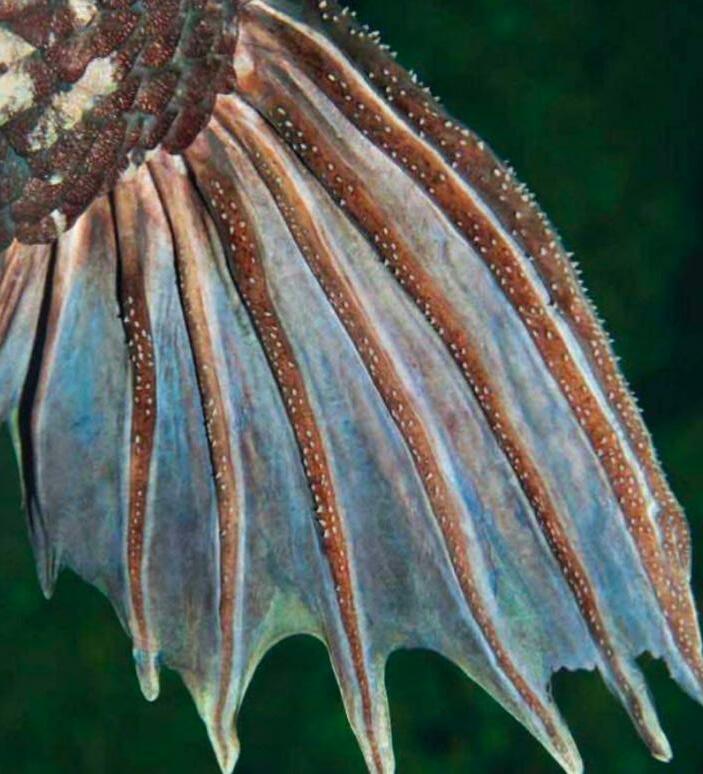
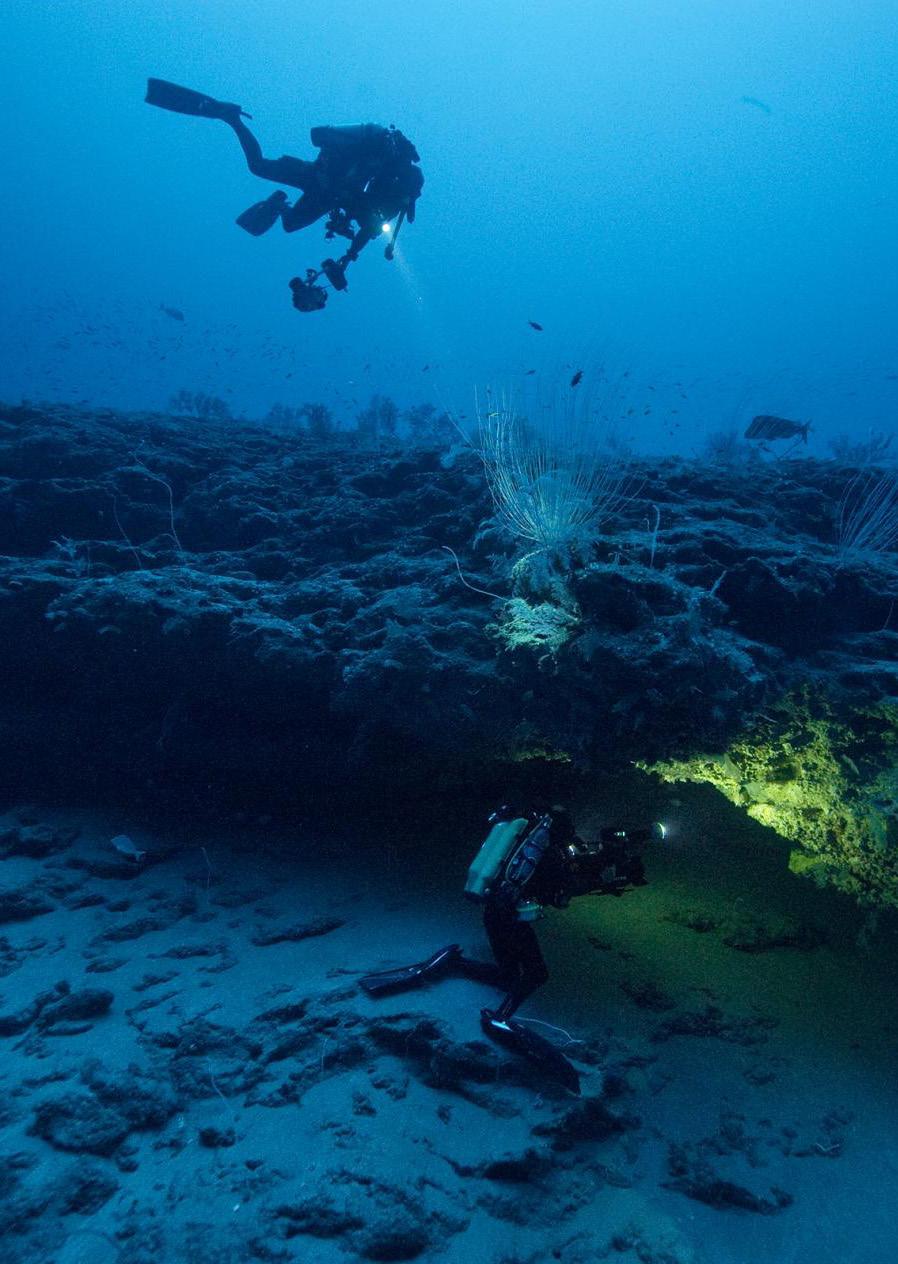
A crystal layer behind the coelacanth’s retina reflects light like a mirror, a boon in the ocean’s dim waters.
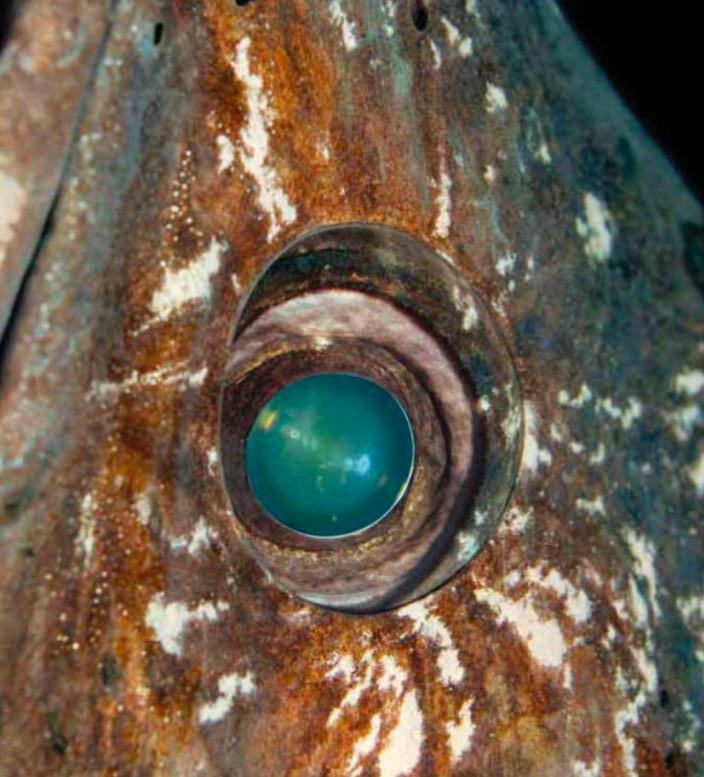


Spring fog drifts over a Pennsylvania apple orchard at sunrise. Each year, owner John Lerew rents 180 honeybee hives holding millions of bees to pollinate several hundred acres. Most large farms bring in managed bees like these. “For us,” says Lerew, “they’re a must.”
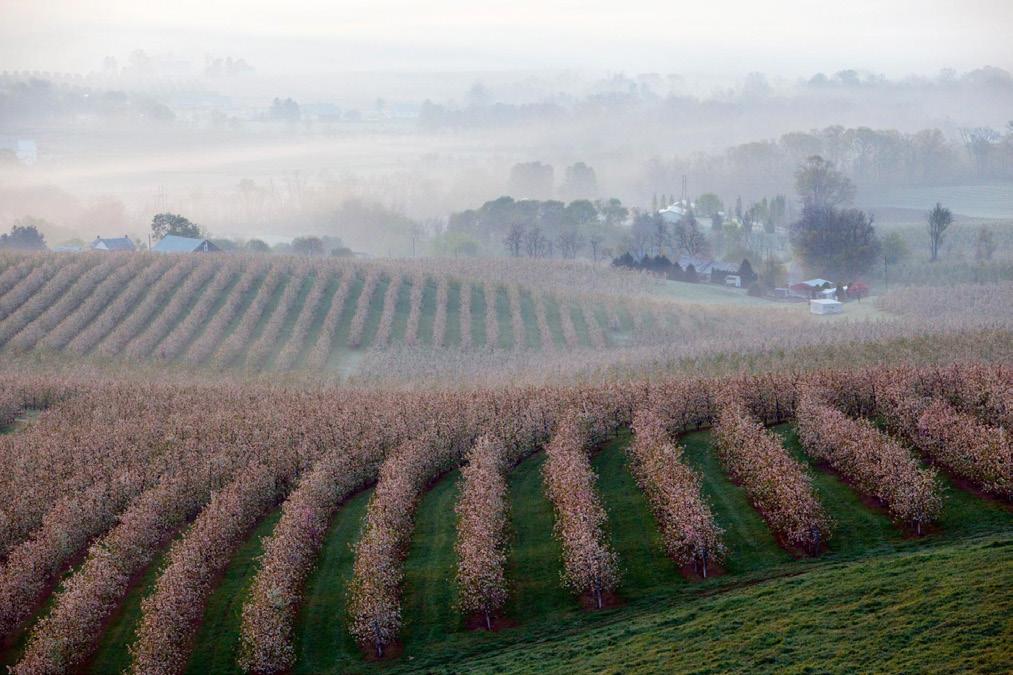
Row upon row, tomato plants stand in formation inside a greenhouse in Willcox, Arizona. Green stems poke from coconut-fiber blocks, reaching toward the glass-paned sky. Labcoated technicians on elevated electric carts meticulously prune the crop. Eurofresh Farms harvests 130 million pounds of tomatoes a year from these perfect plants, grown on 311 acres in buildings outfitted with miles of pipe to ferry water and a network of steel wire above to capture the climbing vines. The ripening fruit smells faintly artificial, all sweetness and no soil.
But there is a natural presence here too. It reveals itself as a low hum that settles deep inside the ears: a thousand bumblebees hard at work.
To reproduce, most flowering plants depend on a third party to transfer pollen between their male and female parts. Some require extra encouragement to give up that golden dust. The tomato flower, for example, needs a violent shake, a vibration roughly equivalent to 30 times the pull of Earth’s gravity, explains Arizona entomologist Stephen Buchmann, international coordinator of the Pollinator Partnership. “The scale is different,” he says, “but consider that fighter pilots usually black out after half a minute at four to six g’s.”
Growers have tried numerous ways to rattle pollen from tomato blossoms. They’ve used shaking tables, air blowers, blasts of sound, and vibrators laboriously applied by hand to each bloom cluster. But the tool of choice in today’s greenhouses? The humble bumblebee. Give a bee access to a tomato flower, and she’ll glom on and quiver fiercely as she feeds, letting loose a cloud of pollen that hits the plant’s stigma (the tip of the female anatomy) and also sticks to the bee’s fuzzy body. She then ferries those particles to the next blossom. It’s called buzz pollination, and it works like a charm.
No surprise that nature’s design does the job best. What’s astonishing is the array of workers that do it: More than 200,000 individual animal species, by varying strategies, help flowers make more flowers. Flies and beetles are the original pollinators, going back to when flowering plants first appeared 130 million years ago. As for bees, scientists have identified some 20,000 distinct species so far, and about one-fifth of those pollinate flowers in the United States. Hummingbirds, butterflies, moths, wasps, and ants are also up to the task. Snails and slugs smear pollen as they slide over flower clusters. Mosquitoes carry pollen for batches of orchids, and bats, with diverse muzzles and tongues adapted to tap differently shaped blossoms, move pollen for 360 plants in the Americas alone.
DUSTERSEven nonflying mammals do their part: sugarloving opossums, some rain forest monkeys, and lemurs in Madagascar, all with nimble hands that tear open flower stalks and furry coats to which pollen sticks. Most surprising, some lizards, such as geckos and skinks, lap up nectar and pollen and then transport the stuff on their faces and feet as they forage onward.
Flowering plants—there are more than 240,000 species of them—have evolved in step with their pollinators, using sweet scents and bright colors to lure with the promise of a meal.
Flower receptacles, like the animals’ transport systems, are wonderfully varied, from tubes and gullets to flaps, brushes, and spurs. Match the right animal and plant parts—long tongue poked into narrow tube, furry face pressed into sticky brush—and pollen is soon on its way.
All that messy diversity, unfortunately, is not well suited to the monocrops and megayields of modern commercial farmers. Before farms got so big, says conservation biologist Claire Kremen of the University of California, Berkeley, “we didn’t have to manage pollinators. They were all around because of the diverse landscapes. Now you need to bring in an army to get pollination done.”
Photo / Mark W. MoffettThe European honeybee, first imported to the Colonies some 400 years ago, has been the domesticated pollinator workhorse in the U.S. since people began trucking them up and down highways in the 1950s. Now at least a hundred commercial crops in the U.S. rely almost entirely on managed honeybees, which beekeepers raise and rent out to tend to big farms. And although other species of bees— mason bees, for example—are five to ten times more efficient on a per-bee basis at pollinating certain fruits, honeybees have bigger colonies (30,000 or more bees per hive), forage over longer distances, and tolerate management and movement better than most insects.
They’re not picky—they’ll spend their time on almost any crop. It’s tricky to calculate what their work is truly worth; some economists put it at more than $200 billion globally a year.
Industrial-scale farming, however, may be wearing down the system. Honeybees have suffered diseases and parasite infestations for as long as they’ve been managed, but in 2006 came an extreme blow. In the U.S. and other countries, bees in massive numbers began to disappear over the winter. Beekeepers would lift the lid of a hive to find only the queen and a few stragglers, the worker bees gone. In the U.S. a third to half of all hives crashed; some beekeepers reported colony losses near 90 percent. The mysterious culprit was named colony collapse disorder (CCD), and it remains an annual menace—and an enigma.
When CCD first hit, many people, from agronomists to the public, assumed that our slathering of chemicals on agricultural fields was to blame. Indeed, says Jeff Pettis of the USDA Bee Research Laboratory, “we do find more disease in bees that have been exposed to pesticides, even at low levels.” But CCD likely involves multiple stressors. Poor nutrition and chemical exposure, for instance, might pummel a bee’s immunities before a virus finishes the insect off.
It’s hard to tease apart factors and outcomes, Pettis says. New studies reveal that fungicides— not previously thought toxic to bees—can interfere with microbes that break down pollen in the insects’ guts, affecting nutrient absorption and thus long-term health and longevity. Some findings pointed to viral and fungal pathogens working together. “I only wish we had a single agent causing all the declines,” Pettis says. “That would make our work much easier.”
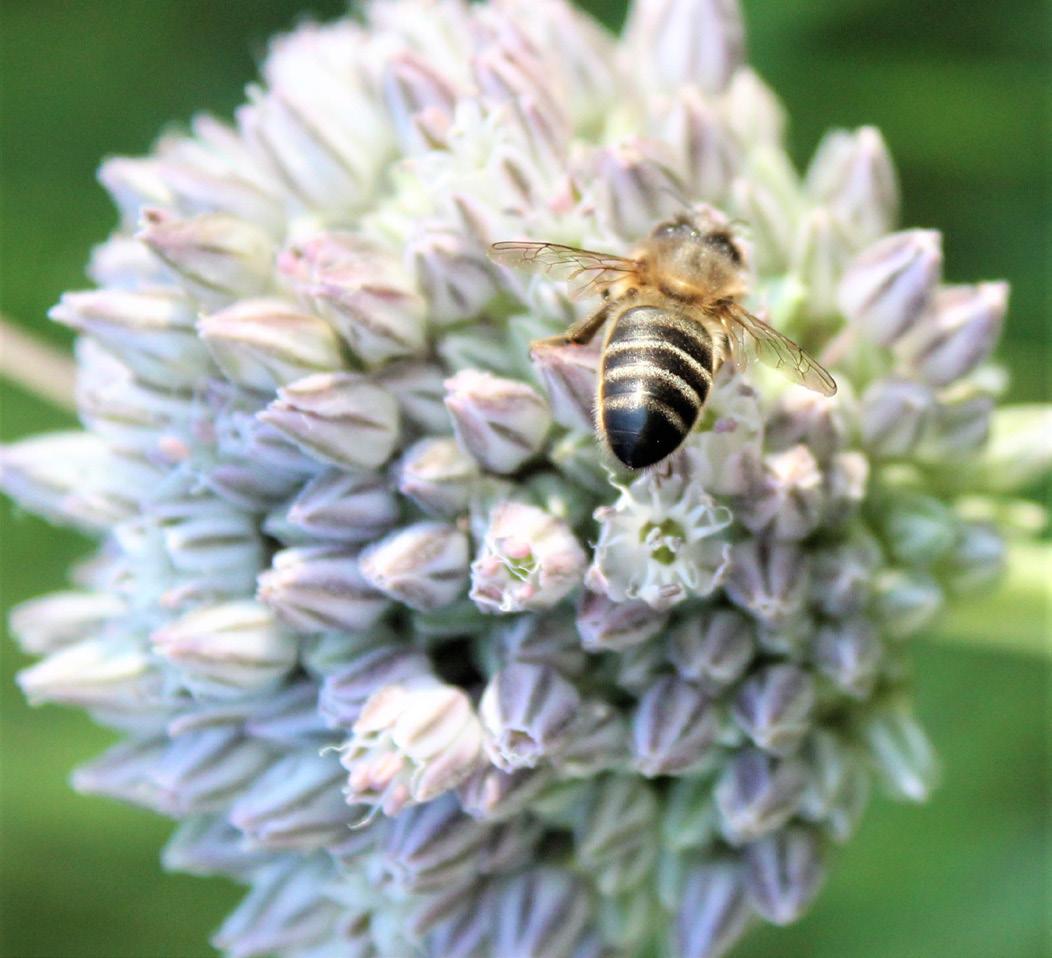
As managed bees take a hit, so too do wild pollinators, whose work pollinating U.S. crops is worth about three billion dollars annually. Some notable bumblebee species are rarely seen anymore, with others becoming increasingly scarce. But few of the scores of native pollinators, less visible and less valued than the big-money honeybees, have been monitored long term.

You can’t move the farm, but you can diversify what grows in its vicinity: along roads, even in tractor yards. Not only is better for native pollinators, but it’s just better agriculture.
- Claire KremenWhat to do? Give pollinators more of what they need and less of what they don’t, and ease the burden on managed bees by letting native animals do their part, say scientists. Reduced reliance on chemicals in agriculture is part of the solution, says Buchmann, since all animals need their immune systems in top shape to combat pathogens in their environment.
Meanwhile, habitat loss and alteration, he says, are even more of a menace to pollinators than pathogens. Claire Kremen encourages farmers to cultivate the flora surrounding farmland to help solve habitat problems. “You can’t move the farm,” she says, “but you can diversify what grows in its vicinity: along roads, even in tractor yards.” Planting hedgerows and patches of native flowers that bloom at different times and seeding fields with multiple plant species rather than monocrops “not only is better for native pollinators, but it’s just better agriculture,” she says.
Pesticide-free wildflower havens, adds Buchmann, would also bolster populations of useful insects such as blue orchard bees—an extremely effective pollinator of almonds in California. Native bumblebees in Wisconsin aren’t as finicky about cold, wet weather as honeybees, so managing the landscape for their benefit would mean more buzz in the orchards in early spring.
Even in the busiest cities, pollinators can be coddled with a little creativity. Recent studies show that bees off the farm have a healthier and more varied diet than those making the commercial-crop rounds.

Rooftop beehives in New York City help urban gardens and Central Park foliage flourish.
And ecologists are now transforming part of what was once a 2,200-acre landfill on Staten Island into a flowering meadow to give native pollinators a sugar boost. It’s a fairly simple calculation. If there’s habitat, they will come.
Fortunately too, “there are far more generalist plants than specialist plants, so there’s a lot of redundancy in pollination,” Buchmann says. “Even if one pollinator winks out, there are often pretty good surrogates left to do the job.” The key to keeping our gardens growing strong, he says, is letting that diversity thrive. Take away that variety, and we’ll lose more than honey. Many flowering plants would disappear, and with them apples, peaches, pears, and a host of other crops. Without pollinators there’d be no raspberries, blueberries, or even milk on your cereal (cows feed on beepollinated alfalfa and clover). No coffee or chocolate. No canola, a biofuel crop. No more summer watermelon or Halloween pumpkins.
U.S. almond growers, who provide 80 percent of the world’s crop, employ a third or more of the country’s commercial beehives during the growing season—a bee extravaganza that’s been called the largest pollination event on the planet. That too would fizzle.
“We wouldn’t starve,” says Kremen. But without the birds and the bees (and the bats and the butterflies), what we eat, and even what we wear—pollinators, after all, give us some of our cotton and flax—would be limited to crops whose pollen travels by other means. “In a sense,” she says, “our lives would be dictated by the wind.”
With a vigorous quiver, an Arizona sweat bee “buzz pollinates” a deadly nightshade flower. Its vibrating body shakes free the golden dust that will feed the larvae back in the nest—and promise the plant’s DNA a future.
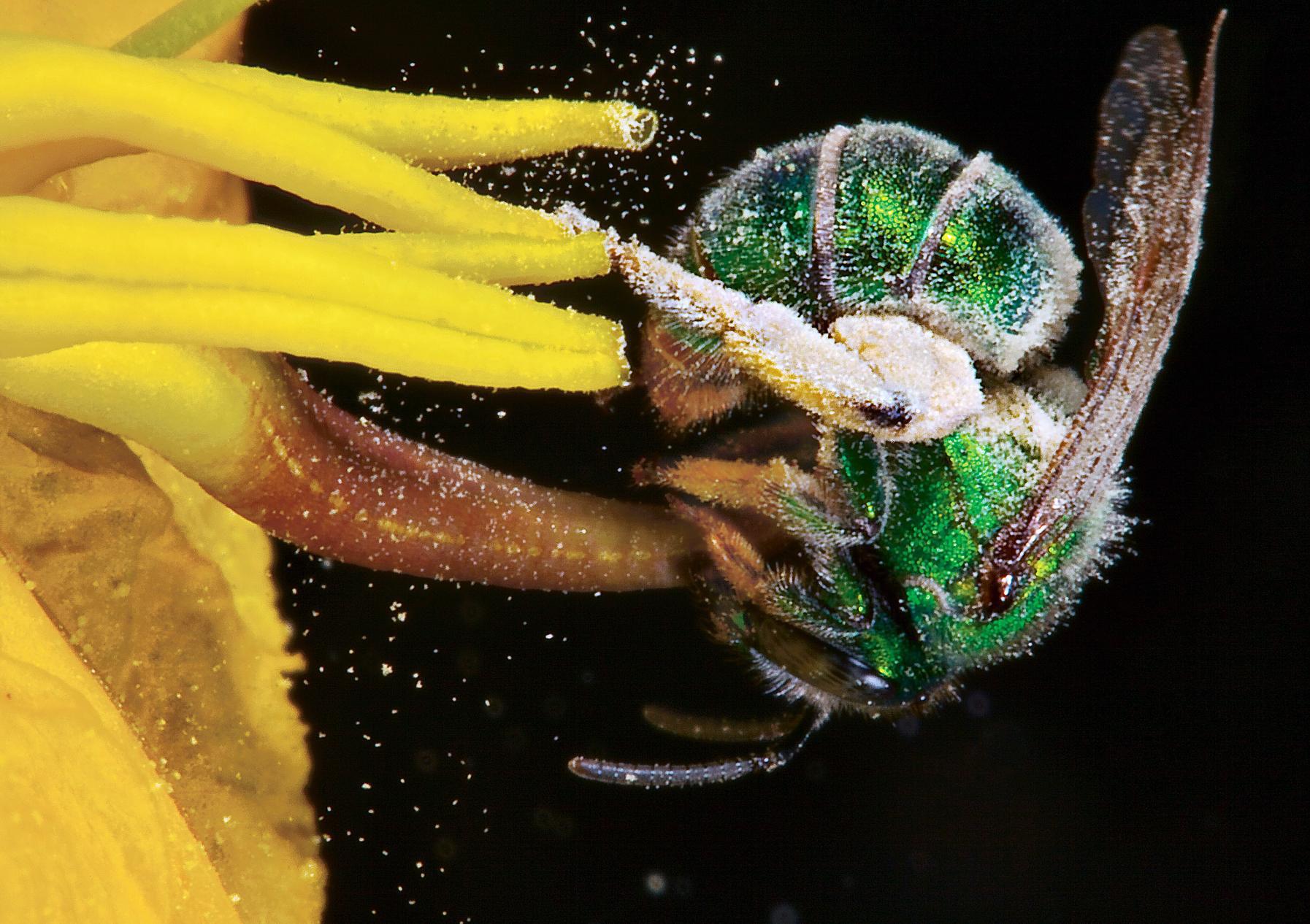
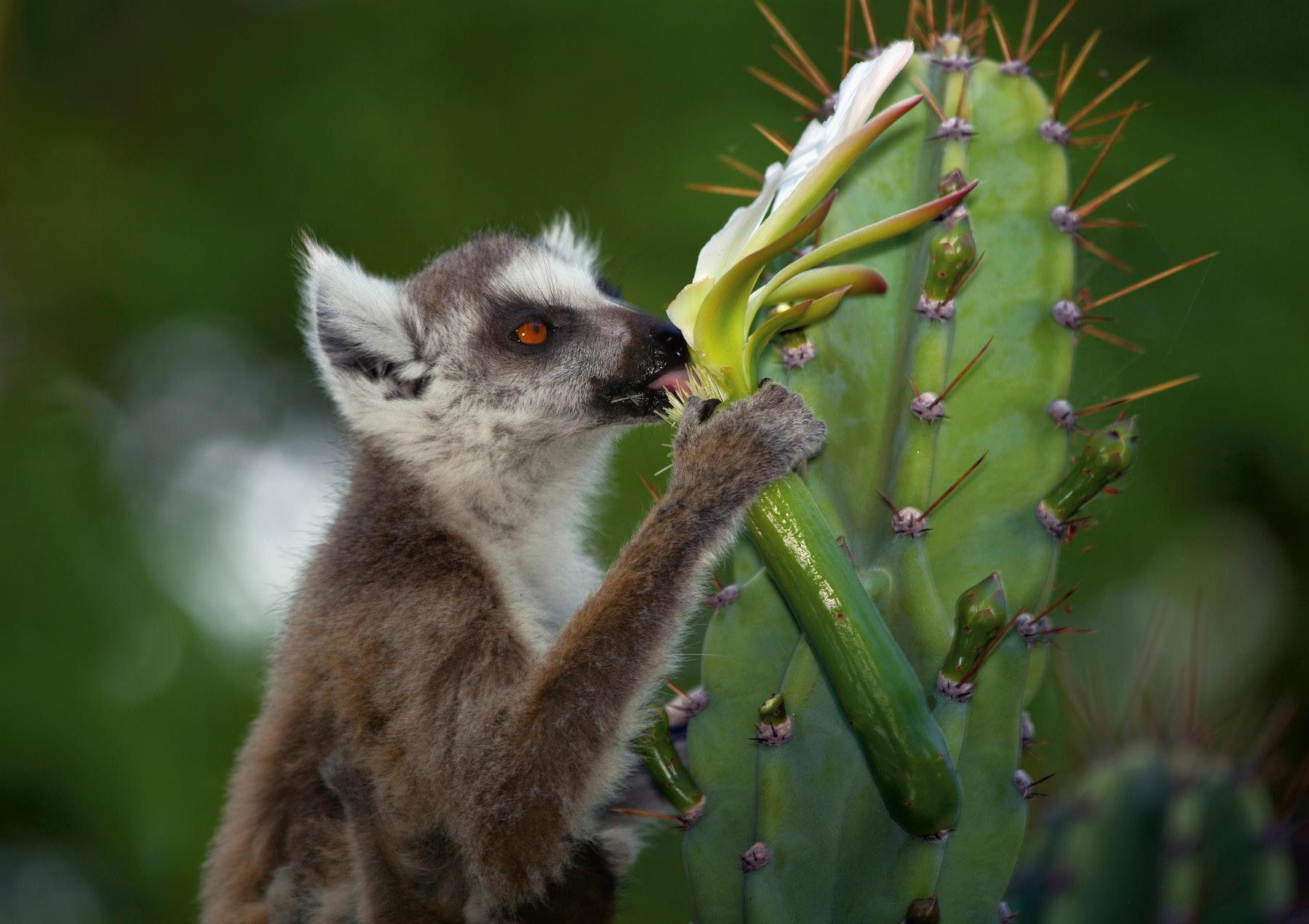
A Madagascar ring-tailed lemur, here gnawing a non-native cactus, ably carries pollen for native plants on its muzzle and hands.Photo / Mark W. Moffett
An ornate day gecko laps nectar from tree blossoms on Mauritius. Rare pollinators, bug-eating lizards may substitute on islands where neither pollinators nor predators are plentiful—filling a niche held by others on the mainland.
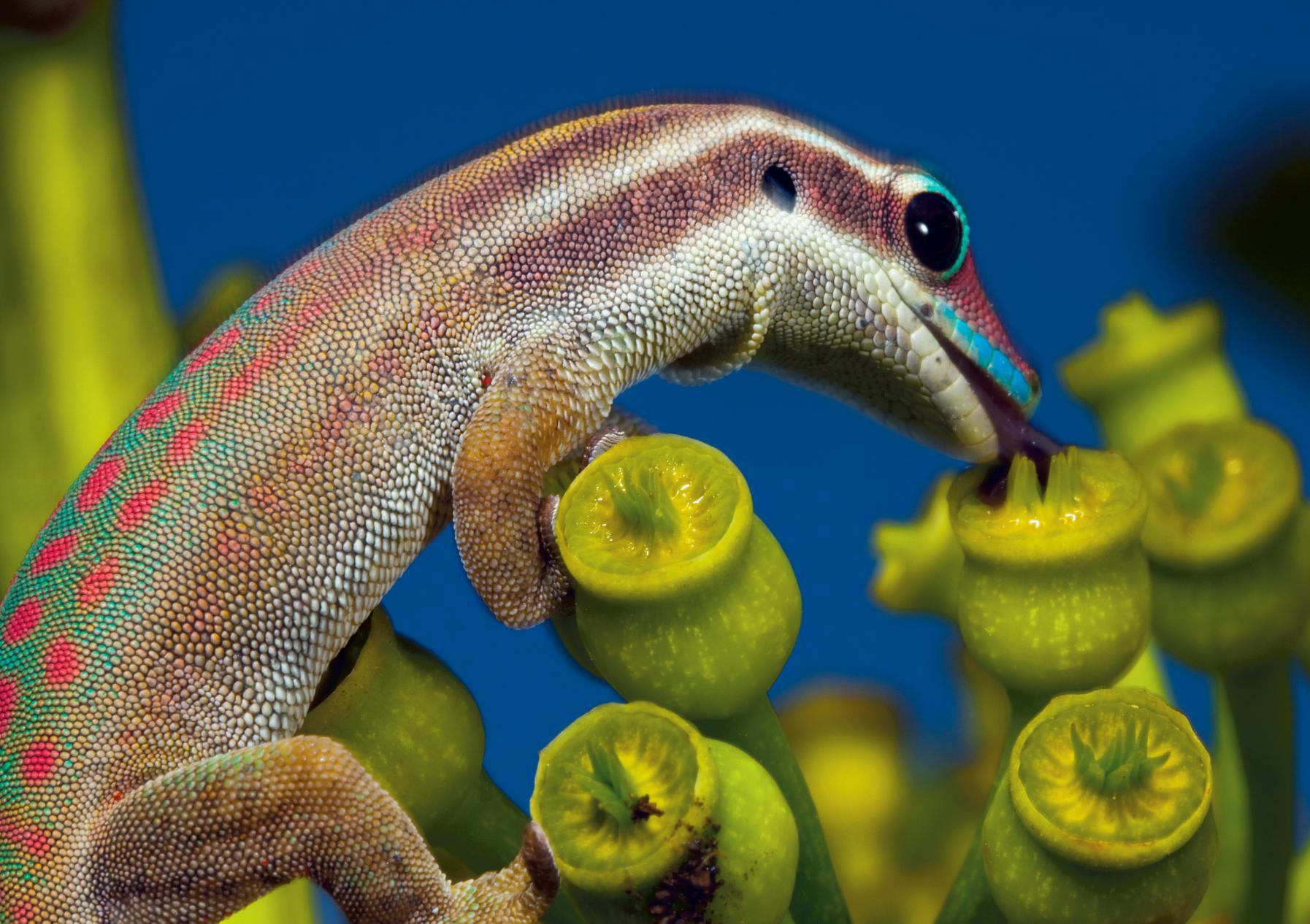
Cross-pollination isn’t ensured when an ant picks up pollen off a pancake plant: The ant may then crawl to the ground or another species.
